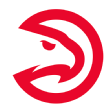Monday was the deadline for NBA teams to complete extensions with two groups of players: former first-round picks entering the final seasons of their rookie-scale contracts and those with multiple seasons left on their remaining contracts.
Although the big story Monday was the Phoenix Suns not reaching an extension with No. 1 overall pick Deandre Ayton, we still saw a record 11 first-round picks sign extensions -- plus two veteran extensions for Indiana Pacers guard Malcolm Brogdon and Washington Wizards center Daniel Gafford.
Previously, four players from the 2018 first round had signed five-year, designated player max extensions: Luka Doncic of the Dallas Mavericks, Shai Gilgeous-Alexander of the Oklahoma City Thunder, Michael Porter Jr. of the Denver Nuggets and Trae Young of the Atlanta Hawks.
Dating back to the beginning of the 2021-22 league year in August, I've been breaking down all the extensions in terms of the value for both players and teams and the implications for the rest of the rosters.
Let's run through the extensions we saw, updated with Wednesday's extension for New Orleans Pelicans center Jonas Valanciunas, who was still eligible because he was entering the final season of his contract.
New Orleans Pelicans
Agreed to a reported two-year, $30.1 million extension with center Jonas Valanciunas
 As compared to the extension the Pelicans struck with a center acquired in a trade last year (Steven Adams), I like this one much better. Presumably, the prospect of Valanciunas hitting unrestricted free agency next summer was part of why the Memphis Grizzlies were willing to send him to New Orleans for Adams in a deal that also included Eric Bledsoe and netted the Grizzlies a swap of first-round picks and a protected 2022 first-rounder from the Los Angeles Lakers.
As compared to the extension the Pelicans struck with a center acquired in a trade last year (Steven Adams), I like this one much better. Presumably, the prospect of Valanciunas hitting unrestricted free agency next summer was part of why the Memphis Grizzlies were willing to send him to New Orleans for Adams in a deal that also included Eric Bledsoe and netted the Grizzlies a swap of first-round picks and a protected 2022 first-rounder from the Los Angeles Lakers.
Instead, the Pelicans have locked Valanciunas in on a deal that looks like a good value. Valanciunas had been a quality starting center in Memphis, and centers of his ilk typically land north of the $15 million a year average value on the extension as free agents. Notably, that salary fits within the limitations on extensions for players recently acquired in trades -- which also means New Orleans won't face any restrictions trading Valanciunas going forward.
Surely, the Pelicans aren't planning on trading Valanciunas so soon after acquiring him. But the possibility of doing so and getting value in return makes this deal different from the Adams extension, which was almost immediately underwater. That's important because of the one troubling point of comparison with the Adams extension: Both were signed before taking the court with Zion Williamson, who has yet to play this season.
The hope is Valanciunas' game will fit better with Williamson because he offers a modicum of floor spacing. By contrast, Adams' offensive value is almost entirely limited to his ability to offensive rebound and finish around the basket -- a tricky fit with a point power forward who finishes in the paint as prolifically as any player in NBA history. If that doesn't prove the case, Valanciunas should have at least as much trade value with this extension as on an expiring contract, and maybe more.
Extending Valanciunas leaves New Orleans with just one player on a full NBA contract who isn't signed for 2022-23, guard Tomas Satoransky. The Pelicans will have the option to bring back nearly their entire rotation with enough room under the projected luxury tax to use their full non-taxpayer midlevel exception and/or add salary through a trade that consolidates depth into a core player.
I'm pessimistic about New Orleans' outlook for the upcoming season due to Williamson's injury and limited proven shot creation in the backcourt, but the Pelicans will have a window to take a step forward next summer. Given Williamson will be eligible for a rookie extension, upgrades will likely be imperative to demonstrate he can win in New Orleans. Extending Valanciunas answers one important question about the makeup of the 2022-23 Pelicans.
Washington Wizards
Agreed to a reported three-year, $40.2 million extension with center Daniel Gafford
 Gafford was a surprise star of the Wizards' late-season run to a playoff spot, averaging 10.1 PPG, 5.6 RPG and 1.8 BPG off the bench as Washington went 17-6 in the 23 games he played for the team after being acquired at the trade deadline. Gafford increased his scoring average per 36 minutes from 13.8 in spotty playing time with the Chicago Bulls before the deal to 20.6 afterwards.
Gafford was a surprise star of the Wizards' late-season run to a playoff spot, averaging 10.1 PPG, 5.6 RPG and 1.8 BPG off the bench as Washington went 17-6 in the 23 games he played for the team after being acquired at the trade deadline. Gafford increased his scoring average per 36 minutes from 13.8 in spotty playing time with the Chicago Bulls before the deal to 20.6 afterwards.
The skill set was also there for Gafford, who just turned 23, to be an effective rim runner. He made 70% of his 2-point attempts in Chicago and simply got more opportunities to finish playing with better playmakers in Washington. He was particularly effective playing with Russell Westbrook against second-unit defenses, as Westbrook assisted 42 of Gafford's 94 field goals with the Wizards.
The surprise was how well Gafford held up defensively. Always a prolific shot blocker, Gafford showed he could anchor an effective defense in Washington, improving his defensive rebounding (despite playing with Westbrook) and slashing his foul rate from 5.5 per 36 minutes with the Bulls to 3.9 with the Wizards.
Despite all that, a deal with an average value of more than $13 million -- the largest Gafford could have possibly signed -- seems lavish for a center who came off the bench for 17.7 MPG after the trade and might not play much more as part of a deep Washington rotation this season with the addition of Montrezl Harrell.
I think it's best to actually think of this as a four-year, $42 million extension. That adds in Washington's 2022-23 team option for $1.9 million, exercised as part of this deal. If the Wizards were serious about keeping Gafford, they probably would have declined that option to make him a restricted free agent next summer rather than letting him become unrestricted in 2023.
From that perspective, this deal pays Gafford about the non-taxpayer midlevel exception, the kind of market he could have realistically had next summer. I still might have waited to get a longer look at Gafford in a rotation role, and potentially put more of his salary up front in 2022-23 rather than backloading it with an extension, but I can understand why Washington wanted Gafford under the longest contract currently possible.
Indiana Pacers
Agreed to a reported two-year, $45 million extension with guard Malcolm Brogdon

As a five-year veteran who's already been through restricted free agency, Brogdon is in a different situation than the former first-round picks who signed contract extensions Monday but faced a similar deadline. While players in the final season of their contracts can extend at any point during the season, those like Brogdon with two years remaining must extend prior to the start of the schedule.
Brogdon tacking on two more years to his deal at essentially the same value as his 2022-23 salary ($22.6 million) is interesting for two reasons. It implies faith from the Pacers that Brogdon will stay healthy. Concern about Brogdon's injury history (he missed a season at Virginia due to a broken bone in his left foot) was reportedly a factor in him sliding to the second round of the 2016 draft and again in the Milwaukee Bucks agreeing to the sign-and-trade that sent him to the Pacers in 2019.
Second, as noted by my ESPN colleague Bobby Marks, extension rules now prohibit Brogdon from being traded this season. That not only shows Indiana's commitment to him individually but more broadly to giving this group a chance to play together under new head coach Rick Carlisle rather than consider a sweeping trade that could have included Brogdon.
The annual salary in Brogdon's extension continues to value him as an above-average starter. Given Brogdon will be 32 years old by the time his extension expires, there's some risk of him declining from that position due to age as well as injury. Still, a four-year, $89 million deal seems fairly reasonable for what Brogdon might have gotten in the market as an unrestricted free agent this offseason.
Phoenix Suns
Agreed to a reported four-year, $43 million extension with guard Landry Shamet
 As much as the Deandre Ayton extension talks became a referendum on Phoenix owner Robert Sarver's willingness to pay the luxury tax, Shamet's extension is probably a better indicator.
As much as the Deandre Ayton extension talks became a referendum on Phoenix owner Robert Sarver's willingness to pay the luxury tax, Shamet's extension is probably a better indicator.
Barring a trade or a truly stunning decision not to match an offer sheet, Ayton will be on the roster in 2022-23, and probably at something similar to the max salary.
Despite giving up a first-round pick for him this summer, letting Shamet walk was a far more realistic outcome for the Suns, and their decision to extend him almost assuredly will put them into the luxury tax next season. Whether Shamet is worth the investment will depend on playing up to head coach Monty Williams' faith in him.
Like many players of his ilk, Shamet proved more valuable during the regular season than the playoffs during his lone year in Brooklyn. Shamet averaged 23 MPG and made 39% of his 3s during the regular season, both marks slightly worse than his previous career averages. That playing time dropped to 17 MPG in the playoffs, as Shamet's size became more of an issue on defense. By Game 7 of the Nets' second-round loss to the Milwaukee Bucks, Shamet played just seven minutes as head coach Steve Nash tightened his rotation.
Given Phoenix is coming off an NBA Finals loss to those same Bucks, Shamet's ability to offer value in the postseason will be paramount. He might actually have a smaller role during the regular season on a team that already boasts Devin Booker, Chris Paul and Cameron Payne in the backcourt, though I suspect we'll see Booker slide down to small forward on a regular basis with the second unit.
An average value of a little more than $10 million basically pegs Shamet right around the non-taxpayer midlevel exception and is also similar to the extension signed by fellow shooting specialist Grayson Allen. Both players got two seasons guaranteed with an even more team-friendly structure for the Suns with Shamet. Per my ESPN colleague Bobby Marks, the third season is non-guaranteed with a team option for Phoenix on the fourth and final year.
Atlanta Hawks
Agreed to a reported four-year, $65 million extension with guard Kevin Huerter
 The challenge for the Hawks after last season's thrilling run to the conference finals will be finding a way to keep their core together without going deep into the luxury tax. Over the summer, Atlanta handed out big new contracts to John Collins (five years, $125 million) and Trae Young (five years and a projected $172 million on an extension that could grow to $207 million if he makes an All-NBA team this season) as well as a two-year, $46 million extension for center Clint Capela.
The challenge for the Hawks after last season's thrilling run to the conference finals will be finding a way to keep their core together without going deep into the luxury tax. Over the summer, Atlanta handed out big new contracts to John Collins (five years, $125 million) and Trae Young (five years and a projected $172 million on an extension that could grow to $207 million if he makes an All-NBA team this season) as well as a two-year, $46 million extension for center Clint Capela.
Even with extensions potentially coming next offseason for 2019 first-round picks De'Andre Hunter and Cam Reddish, getting a deal done with Huerter was important. After all, he was fifth on the Hawks in playoff minutes and led the team there during the regular season.
With Hunter sidelined by a knee injury that remains a long-term concern, Huerter stepped into the starting lineup midway through Atlanta's second-round series with the Philadelphia 76ers and played a key role in the upset, scoring a season-high 27 points on 10-of-18 shooting in the deciding Game 7.
A deal with an average annual value of a little more than $16 million seems fair for Huerter, putting him in the same ballpark as more accomplished teammate Bogdan Bogdanovic ($18 million annual value). Huerter should retain trade value at this price if the Hawks ultimately decide to prioritize Hunter and Reddish as their wings of the future, but it's also a nice bit of security after he made less than $8 million total over his first three NBA seasons.
Pending Young becoming eligible for the designated rookie extension and bumping up his salary, Atlanta can still duck under the projected 2022-23 tax line by waiving veteran Danilo Gallinari, whose salary is just $5 million guaranteed. By 2023-24, avoiding the tax will become far more difficult, but the Hawks have a few years to figure things out.
Milwaukee Bucks
Agreed to a reported two-year, $20 million extension with guard Grayson Allen
 The Bucks were in an interesting spot with two shooting guards eligible for extensions after acquiring Allen this summer to go along with incumbent starter Donte DiVincenzo, who's still sidelined by the ligament tear in his left ankle that ended his playoff run in the first round.
The Bucks were in an interesting spot with two shooting guards eligible for extensions after acquiring Allen this summer to go along with incumbent starter Donte DiVincenzo, who's still sidelined by the ligament tear in his left ankle that ended his playoff run in the first round.
Though DiVincenzo is surely the more valuable of the two players if he can get back to the level at which he played last season, Allen is the one who will be under contract after agreeing to an extension that essentially values him at the non-taxpayer midlevel exception (projected at $20.7 million on a two-year deal next summer).
As a taxpaying team, Milwaukee won't have access to that exception next summer. Still, if the choice here was between using their taxpayer midlevel or extending Allen, I probably would have passed.
Allen improves the 3-point shooting of a team that struggled to space the floor after DiVincenzo's injury, having knocked down 39.5% of his attempts during two seasons with the Memphis Grizzlies. Yet Allen's defensive limitations could make it challenging to play him heavy minutes in the playoffs, something the Bucks experienced last year with Bryn Forbes. Allen is bigger than Forbes, who fell out of head coach Mike Budenholzer's rotation by the end of the NBA Finals, but will be a target for opposing offenses nonetheless.
With Allen's extension, Milwaukee now has more than $140 million in committed salary for 2022-23, not counting player options for Thanasis Antetokounmpo, Pat Connaughton and Bobby Portis. That's already enough to put the Bucks up against the projected luxury-tax line before attempting to re-sign key contributors Connaughton, DiVincenzo and Portis.
Eventually, something will have to give in Milwaukee to mitigate the tax bill. Odds are that player will be more valuable from a playoff perspective than Allen.
Memphis Grizzlies
Agreed to a reported four-year, $105 million extension with forward Jaren Jackson Jr.
 Gauging Jackson's value was one of the trickier questions of extension season because he missed the first 61 games of 2020-21 following surgery to repair a meniscus tear. Predictably, Jackson never got back to the form he'd shown in his second NBA season as a scorer, making just 28% of his 3-point attempts.
Gauging Jackson's value was one of the trickier questions of extension season because he missed the first 61 games of 2020-21 following surgery to repair a meniscus tear. Predictably, Jackson never got back to the form he'd shown in his second NBA season as a scorer, making just 28% of his 3-point attempts.
It was clear that giving Jackson a full max would have been aggressive given the injury and his track record. This deal gets close to that point but still gives Memphis some potential savings as compared to the possibility of a four-year, max offer sheet from another team next summer -- currently projected at $128 million.
From Jackson's perspective, this deal offers significant insurance against another serious injury this season. It also pays him like a promising big man with All-Star potential. Atlanta Hawks forward John Collins looked like a good comparison because he's another high-volume frontcourt scorer with above-average efficiency. After failing to reach an extension with the Hawks last year, Collins re-signed on a five-year deal with an average value of $25 million -- slightly less than the $26.25 million Jackson got.
As compared to Collins, Jackson probably has the higher ceiling because of his defensive versatility and relative age. Jackson entered the NBA a full year younger than Collins, giving him an extra season to continue his development before reaching his peak. If Jackson can max out his potential as a floor spacer and grow into a rim protector and rebounder capable of anchoring a defense, this contract will look like a bargain.
At the same time, Jackson's youth means a four-year deal won't take him quite up to his peak. Jackson can hit unrestricted free agency in the summer of 2026 before his 27th birthday.
ESPN's Bobby Marks reported Monday that the Grizzlies will begin Jackson's contract at its highest point -- $28.9 million, near the projected maximum for players with six or fewer years of experience -- and have it descend from there. That's the latest example of Memphis' front office thinking long-term. Such a high starting point will likely take the Grizzlies out of using cap space next summer, with most of their remaining space going to a cap hold for unrestricted free agent Kyle Anderson.
Down the road, Jackson's declining salary will give Memphis more flexibility to extend or re-sign other recent draft picks as they conclude their rookie contracts. In particular, Jackson's year-to-year decreases will largely offset raises for Ja Morant on a projected extension for the Grizzlies' star guard next summer.
Phoenix Suns
Agreed to a reported four-year, $90 million extension with forward Mikal Bridges
 The day before the deadline for NBA teams to sign eligible former first-round picks entering their fourth seasons to contract extensions, the Suns agreed to a deal with one of their two eligible starters.
The day before the deadline for NBA teams to sign eligible former first-round picks entering their fourth seasons to contract extensions, the Suns agreed to a deal with one of their two eligible starters.
While most of the focus has been on Phoenix's negotiations with 2018 No. 1 overall pick Deandre Ayton, which ESPN's Adrian Wojnarowski reported earlier this month had reached an "impasse," Bridges was nearly as important a potential restricted free agent. Bridges led the Suns in minutes played during their 51-21 regular season, averaging nearly two per game more than Ayton, prior to Ayton's breakthrough postseason run.
As compared to Ayton, who is seeking a max extension according to Wojnarowski, Bridges had the potential to cost Phoenix more money as a restricted free agent next summer with another performance that established the 25-year-old forward as one of the league's best 3-and-D contributors. Bridges shot a career-high 42.5% from 3-point range last season (he's at 38% in his three years overall) and is tasked with defending the opposition's best wing scorer on a nightly basis.
Given every contender needs a player like Bridges, he could have reset the market for players of his ilk as a restricted free agent. As it is, the $22.5 million average salary on Bridges' four-year extension beats the $21.66 million base salary for Denver Nuggets forward Aaron Gordon, who recently agreed to his own extension. And it easily surpasses the $18 million average for Toronto Raptors forward OG Anunoby on his extension last fall, albeit with a player option that allows Anunoby to test unrestricted free agency after just two seasons.
Agreeing to a deal with Bridges gives the Suns more clarity about their negotiations with Ayton and reserve Landry Shamet, a third 2018 first-rounder on the team eligible for a contract extension. Based on the current projected 2022-23 salary cap of $119 million, a max deal for Ayton (starting at $29.75 million) would give Phoenix up to $157 million-plus in payroll assuming standard 8% raises for Bridges. That would put the Suns well over the projected $144.6 million luxury-tax line.
Phoenix could shed some salary by trading backup center Dario Saric, who is still rehabbing an ACL tear suffered in the NBA Finals, and replacing him with another player making the veterans minimum. But even that move would leave the Suns about $5 million into the tax. That helps explain why Phoenix prefers to negotiate some savings rather than offering Ayton a full max and might also make an extension for Shamet unrealistic.
Whatever happens Monday, the Suns can be confident they've got another core piece under contract going forward with an extension for Bridges.
Orlando Magic
Agreed to a reported four-year, $50 million extension with center Wendell Carter Jr.
 Under the leadership of president of basketball operations Jeff Weltman and GM John Hammond, the Magic have tended to take care of their impending restricted free agents with extensions, and Carter is the latest example. It's still not clear what kind of center Carter can become, but this deal seems to fairly balance risk and reward for the team and a player who has three years as a starter by age 22.
Under the leadership of president of basketball operations Jeff Weltman and GM John Hammond, the Magic have tended to take care of their impending restricted free agents with extensions, and Carter is the latest example. It's still not clear what kind of center Carter can become, but this deal seems to fairly balance risk and reward for the team and a player who has three years as a starter by age 22.
Most of Carter's experience came in Chicago before Orlando acquired him as part of the return for Nikola Vucevic at the March trade deadline. Carter started 19 of his 22 games with the Magic, putting up similar numbers to what we'd seen with the Bulls.
For a player his size and age, Carter is skilled and savvy but hasn't been especially productive by modern center standards. His stint in Orlando was the first time he outperformed replacement level for centers by my wins above replacement player (WARP) metric. Still, a step forward in Carter's development could have made him an intriguing restricted free agent next summer with a chance to make more than $12.5 million per year.
The structure of this contract is interesting. According to ESPN's Bobby Marks, Carter's salary will begin at $14 million before descending to less than $11 million by 2025-26, the final year of the deal. Based on an expected jump in the salary cap when the NBA's new national television deals kick in that season, Carter will probably make substantially less than the value of the non-taxpayer midlevel exception.
From Carter's perspective, extending now mitigates the possible risk of injury or a poor season, which could have forced him to choose between his qualifying offer ($9.3 million) or a more modest long-term deal next summer.
In Mo Bamba, taken one pick before Carter in 2018, the Magic have a second center eligible for an extension. Although Bamba is coming off a strong preseason that saw him rank 11th in WARP, I wouldn't be surprised if Orlando waits on a new deal. Bamba has made just six starts through his first three seasons, leaving his future more of a question mark.
Boston Celtics
Agreed to a reported four-year, $54 million extension with center Robert Williams III
 Before Williams, the three completed rookie extensions had all been relatively simple max ones with limited negotiating points. This is the first rookie extension for less than the max, and it values Williams as a starting center -- a role he never consistently played under former Celtics coach Brad Stevens, who negotiated this deal in his new position as president of basketball operations.
Before Williams, the three completed rookie extensions had all been relatively simple max ones with limited negotiating points. This is the first rookie extension for less than the max, and it values Williams as a starting center -- a role he never consistently played under former Celtics coach Brad Stevens, who negotiated this deal in his new position as president of basketball operations.
Williams did inherit the center job in March after Boston traded incumbent starter Daniel Theis at the deadline. Over the next 10 games, Williams averaged 10.1 points and 9.1 rebounds along with 3.4 assists and 2.0 blocks, showing he could translate his strong per-minute performance in a larger role. The playmaking, in particular, was a welcome addition for the Celtics' attack as the team went 8-2 in those games.
Alas, knee soreness and turf toe limited Williams to just five games the rest of the regular season. He came off the bench in three playoff games before missing the conclusion of Boston's loss to the Brooklyn Nets following an ankle sprain.
As a result, the Celtics are paying Williams like the player they expect him to become rather than the one he's been so far in his career. That's reasonable given Williams' age. He's 23, and this deal will take him through his development years and into his prime.
It would have been interesting to see what Williams' market would have looked like next summer. Just one center got a deal larger than this in free agency this year: Jarrett Allen of the Cleveland Cavaliers, who re-signed on a five-year, $100 million deal as a restricted free agent.
Williams got more money over the same number of years than Richaun Holmes of the Sacramento Kings (four years, $46 million), the top unrestricted center and a proven starter. At the same time, Williams could have benefited from what my ESPN colleague Bobby Marks explained recently projects as an abnormally weak class of free agents.
This extension and one for guard Marcus Smart completed earlier this week for a reported $77 million over four years offer Boston cost certainty going forward. Including five team options for recent draft picks, the Celtics now have 10 players under contract for 2022-23 and are within a few million of the projected luxury-tax line.
The two deals take Boston out of the running for cap space next summer. Instead, the Celtics' best chance of remaking their roster will come via trade.
Dallas Mavericks
Agreed to a five-year, $207 million extension with guard Luka Doncic
 As compared to this summer's first two max rookie extensions -- for Atlanta Hawks guard Trae Young and Oklahoma City Thunder guard Shai Gilgeous-Alexander -- there was even less to negotiate for the Mavericks and Doncic after he finished leading his native Slovenia to the semifinals of the Tokyo Olympics. Because Doncic has made the All-NBA team each of the past two seasons, he was already automatically eligible for the maximum 30% of the salary cap -- the first player in NBA history eligible for this type of extension upon signing.
As compared to this summer's first two max rookie extensions -- for Atlanta Hawks guard Trae Young and Oklahoma City Thunder guard Shai Gilgeous-Alexander -- there was even less to negotiate for the Mavericks and Doncic after he finished leading his native Slovenia to the semifinals of the Tokyo Olympics. Because Doncic has made the All-NBA team each of the past two seasons, he was already automatically eligible for the maximum 30% of the salary cap -- the first player in NBA history eligible for this type of extension upon signing.
As a result, the value of Luka's extension will be determined only by the 2022-23 salary cap and is currently projected at $207 million.
That left a player option as the only negotiating point, and there was little doubt Doncic would get this too, giving him the opportunity to become an unrestricted free agent in the summer of 2026 at age 27. Alternatively, Luka could replace the final season of his contract with a supermax extension should he continue to make All-NBA teams and decide to remain in Dallas.
For the Mavericks, this has all been predestined since pretty much the moment they acquired Doncic in a draft-night trade. The timing of Luka's rookie extension made this summer the team's last opportunity at meaningful cap space in a while, which made it disappointing for Dallas that so many of the best potential free agents chose to extend their contracts instead.
Unable to land free-agent point guard Kyle Lowry, the one difference-making unrestricted free agent to change teams, the Mavericks settled for running it back by re-signing Tim Hardaway Jr. and using exceptions to add role players Reggie Bullock and Sterling Brown. Dallas still has some avenues to improve, including a $10.9 million trade exception generated by dealing Josh Richardson to the Boston Celtics, but this offseason likely won't land Luka another co-star.
Although the Mavericks will surely continue to explore the trade market, it doesn't look like they'll have meaningful cap space again until at least the summer of 2024, when contracts for Bullock and Kristaps Porzingis expire.
Atlanta Hawks
Agreed to a five-year designated player extension with guard Trae Young
 There was never any question Young would get the largest possible extension, which could allow him to make up to a projected $207 million if he qualifies -- like Doncic already has -- by making an All-NBA team next season (or winning Defensive Player of the Year, which seems less likely).
There was never any question Young would get the largest possible extension, which could allow him to make up to a projected $207 million if he qualifies -- like Doncic already has -- by making an All-NBA team next season (or winning Defensive Player of the Year, which seems less likely).
Young wasn't particularly close to making this year's All-NBA teams, getting just a pair of third-team votes. He was more competitive in 2019-20, when he received one vote for the second team and 10 for the third team to finish ninth among guards. However, that was before Young opened eyes with his outstanding playoff run, one of the best in recent memory by a player debuting in the postseason.
Given the way Young's production held up or even improved in the playoffs, I suspect he'll get more benefit of the doubt from voters in 2020-21 -- particularly if the Hawks can build off their strong second half and run to the Eastern Conference finals.
The other key issue here was whether Young would get an option on the final season of his extension. That precedent was set last year by the Utah Jazz's Donovan Mitchell and the Boston Celtics' Jayson Tatum, both of whom got player options after making the All-Star team the previous season. Young didn't make the team last season, but he did in 2020, so it makes sense that he had the leverage to demand an option -- in his case an early termination option, which provides the same benefit to the player of getting to free agency (or a supermax extension) a year earlier.
Oklahoma City Thunder
Agreed to a five-year designated player extension with guard Shai Gilgeous-Alexander
 While Young was reaching the Eastern Conference finals with Atlanta, Gilgeous-Alexander was hearing his name in trade proposals sending Oklahoma City a top pick in this year's draft. To be clear, that idea wasn't because Gilgeous-Alexander isn't valuable. Rather, it was precisely because he's more valuable to another team than the Thunder, who won't derive on-court benefit from the cheap final season of his rookie contract ($5.5 million).
While Young was reaching the Eastern Conference finals with Atlanta, Gilgeous-Alexander was hearing his name in trade proposals sending Oklahoma City a top pick in this year's draft. To be clear, that idea wasn't because Gilgeous-Alexander isn't valuable. Rather, it was precisely because he's more valuable to another team than the Thunder, who won't derive on-court benefit from the cheap final season of his rookie contract ($5.5 million).
Whether Oklahoma City actually considered dealing Gilgeous-Alexander or not, the possibility of adding a top pick has passed and the Thunder signaled their long-term commitment to him by quickly striking an extension early Tuesday morning Eastern time.
Both sides can point to winning a key part of the negotiation. Gilgeous-Alexander got the 30% max criteria across any of the three All-NBA teams, rather than a descending scale like in De'Aaron Fox's extension with the Sacramento Kings, meaning an All-NBA third-team nod would push Gilgeous-Alexander's extension from a projected $172 million to $207 million.
On the other side, Oklahoma City can feel good about signing Gilgeous-Alexander to a full five-year deal without any options. That gives more time for the Thunder's rebuild to bear fruit on the court before the team feels any pressure from Gilgeous-Alexander to accelerate the process.
